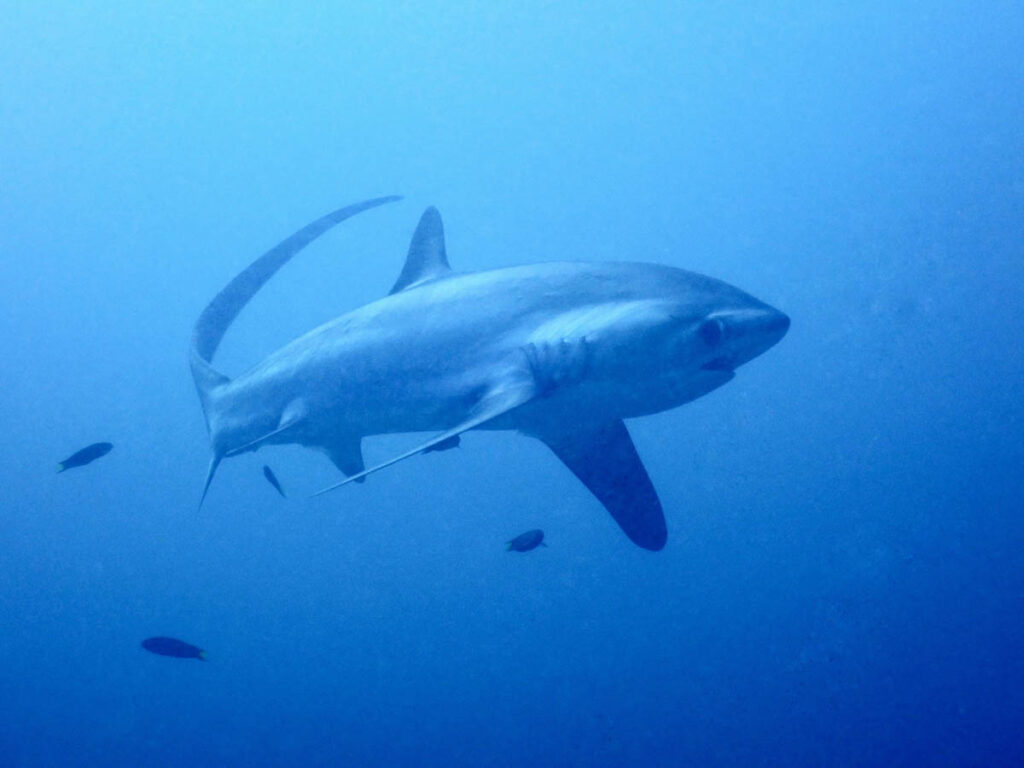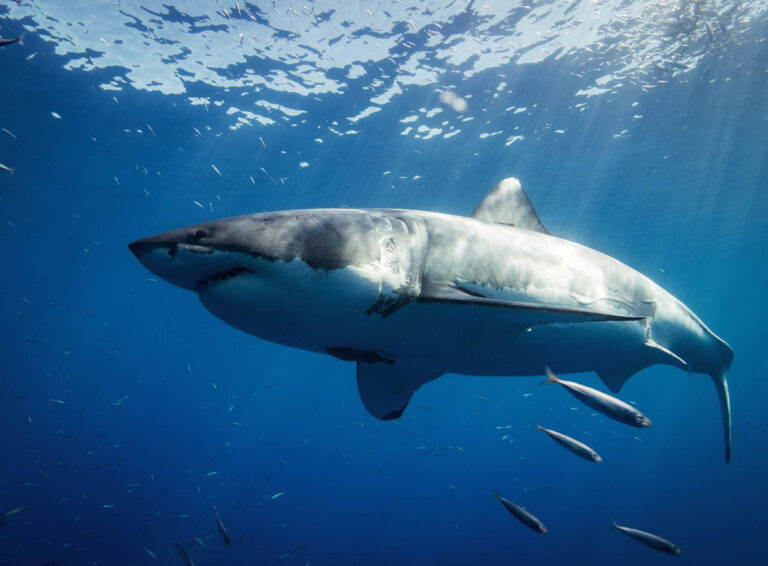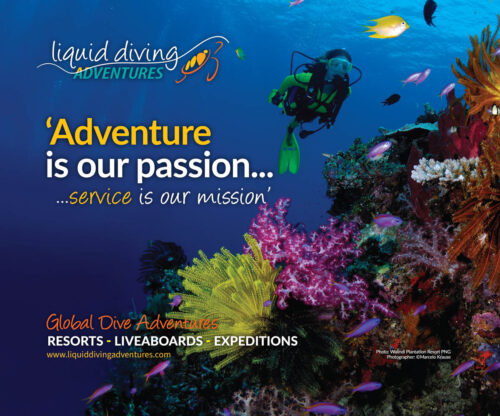Diving with sharks is one of the most awe-inspiring experiences a scuba diver can have. These apex predators command respect, embodying a sense of power and grace that can transform a routine dive into an unforgettable encounter. For those who’ve had the privilege of sharing the water with them, it’s clear that swimming with sharks isn’t just an adrenaline rush—it’s an opportunity to witness one of the ocean’s most misunderstood creatures in its natural habitat.

But as with any wildlife interaction, there are essential rules to follow to ensure both the safety of the diver and the well-being of the sharks. In this article, we’ll explore what makes shark diving so extraordinary, why sharks are vital to the health of our oceans, top tips for interacting safely with sharks, and the best places in the world to experience diving with sharks.
The Joy of Swimming with Sharks
Sharks have long fascinated divers for their beauty, diversity, and presence. From the streamlined elegance of blacktip reef sharks to the massive, awe-inspiring whale shark, there’s a sense of adventure and privilege that comes with encountering these creatures in their natural environment.
Contrary to popular belief, sharks are not mindless predators, but rather cautious, curious animals that play a critical role in maintaining ocean health. Diving with sharks offers a unique way to connect with these animals. Watching a hammerhead glide through the blue or witnessing the sheer power of a tiger shark up close can change a person’s perspective on sharks forever. These interactions are not just thrilling—they are educational, offering a rare opportunity to understand the behaviors and characteristics of these often-misrepresented animals.
Why Do Sharks Matter for the Health of Our Oceans?
Sharks play a crucial role in marine ecosystems. As apex predators, they help regulate the populations of other species, maintaining the balance needed for a healthy ocean. By controlling populations of mid-level predators, sharks prevent the overconsumption of herbivorous fish that keep algae levels in check on coral reefs. Without sharks, ecosystems can fall out of balance, leading to issues like coral reef degradation and the collapse of fish populations.
Unfortunately, many shark species are under threat due to overfishing, habitat loss, and the demand for shark fin products. The decline in shark populations can have cascading effects on marine ecosystems, which is why it’s more important than ever to understand and protect these animals.

Top Tips for Interacting Safely with Sharks
When diving with sharks, it’s important to follow proper etiquette to ensure both your safety and the safety of the sharks. Here are some key tips to keep in mind when you encounter these iconic fish:
- Remain calm and steady – Sharks are sensitive to the behavior of divers. Sudden movements, splashing, or erratic swimming can make sharks feel threatened or provoke unwanted attention. Stay calm, move slowly, and keep your hands close to your body.
- Keep an eye on them – Maintaining awareness of the sharks around you is essential, especially when swimming with larger sharks that prefer to approach without being seen. Make sure you know where the sharks are and keep them in your field of vision.
- Stay vertical in the water – Assuming a vertical position in the water can make you appear larger and less like prey. Avoid lying flat on the surface, as this may resemble a seal or injured fish—common prey items for some sharks.
- Don’t chase or touch sharks – As tempting as it may be to get closer to these magnificent animals, chasing or touching them can cause stress or provoke defensive behavior. Always give sharks space and allow them to approach on their terms.
- Be mindful of your gear – Flashy or reflective objects, such as dive watches, cameras, or shiny jewelry, can attract sharks’ curiosity. Tuck away anything that might catch their attention and consider using matte or dark-colored gear when diving in shark-heavy areas.
- Follow the guide’s instructions – If you’re on a guided shark dive, the Divemaster will have a deep understanding of the local shark species and their behavior. Always listen to their instructions, as they are trained to ensure the safety of both divers and sharks.
- Respect the sharks’ space – Sharks, like all animals, have personal boundaries. If a shark appears agitated or starts to change its swimming patterns—such as arching its back or dropping its pectoral fins—it’s a sign to back off and give it more space.
- Avoid diving at dusk and dawn – If you are going scuba diving without a guide and in an area known to have sharks, avoid diving there at dusk and dawn. This is when sharks are more likely to be focused on hunting and may mistake you for prey in the low light levels.
- Don’t dive at seal colonies – Make sure you avoid doing unguided dives at seal colonies known to have a population of sharks, especially larger shark species such as great white sharks. These colonies may be part of the sharks’ hunting grounds.
- Avoid low-visibility waters and where fishing occurs – If you know there is a shark population at one of your preferred dive sites, avoid diving there when the visibility is low or if fishing has occurred in the area recently. Fish blood is likely to attract sharks, and they may not be able to see you clearly (and recognize you are not prey) if the water is murky.

Photo by Jakob Owens on Unsplash
Where Are The Best Places to Dive With Sharks?
There are many incredible places where you can go diving with sharks. Here are some of the top places to inspire your next dive trip:
Tiger Beach, Bahamas
Known for its crystal-clear waters and up-close encounters with tiger sharks, Tiger Beach is a mecca for shark divers. The calm, shallow waters make this destination suitable for new and experienced divers.
If you have only recently earned your diving license, we recommend you get a few dives under your belt before visiting Tiger Beach to ensure your safety and comfort in the water.
Cocos Island, Costa Rica
A UNESCO World Heritage Site, Cocos Island is famous for its large schools of scalloped hammerhead sharks. The diving here is thrilling, with strong currents and deep waters, making it best suited for experienced divers.

Aliwal Shoal, South Africa
Aliwal Shoal is home to a variety of shark species, including ragged-tooth sharks, oceanic blacktip sharks, and even tiger sharks. It’s an accessible destination for Advanced Open Water divers, though some dives can be more challenging due to currents.
Galápagos Islands, Ecuador
When it comes to bucket-list dive destinations, the Galápagos Islands sit at the top of the list. These remote islands are famous for hammerhead sharks, whale sharks, and Galápagos sharks. The biodiversity here is extraordinary, but the strong currents and challenging conditions mean it’s best for advanced divers.
Bimini, Bahamas
Bimini is one of the best places in the world for close encounters with great hammerhead sharks. These huge sharks, with their distinctive hammer-shaped heads and enormous dorsal fins, are typically seen in the crystal-clear waters around Bimini during the winter months.
Bimini’s relatively shallow dive sites and excellent visibility make it an ideal destination for divers of all experience levels. The combination of the sharks’ striking appearance and white sandy seabed make Bimini perfect for underwater photography.

Beqa Lagoon, Fiji
Known as the “Soft Coral Capital of the World,” Fiji is also a prime destination for shark diving, including bull sharks. Beqa Lagoon is a renowned shark diving spot with an array of sharks, from bull sharks to tiger, lemon, blacktip reef, and whitetip reef sharks.
Monad Shoal, Philippines
Famous for sightings of the rare thresher shark, Monad Shoal is a top destination for those wanting to witness these elusive animals. Most dives are moderate in difficulty, making them accessible to Advanced Open Water divers.
Neptune Islands, Australia
For the ultimate adrenaline rush, head to the Neptune Islands off South Australia for cage diving with great white sharks. This location is one of the few places in the world where you can safely observe these apex predators in their natural habitat.
The islands’ waters are home to a healthy population of great whites, thanks to the nearby seal colonies that attract these sharks. Cage diving here is suitable for both beginner and experienced divers, as you don’t need scuba certification to participate—surface cages allow participants to use a hookah system while watching these magnificent creatures up close.

South Ari Atoll, Maldives
The Maldives is a great destination for beginner-friendly shark encounters. The warm, clear waters are home to gentle reef sharks and the iconic whale shark, which can be seen year-round in certain areas like the South Ari Atoll (peak season is December to May).
The relaxed conditions and shallow dive sites make the Maldives an ideal destination for novice divers looking to experience sharks in a safe and serene environment.
Compass Cay, Bahamas
Compass Cay is famous for its friendly population of nurse sharks, offering a unique, hands-on shark encounter in shallow waters. These slow-moving, bottom-dwelling sharks are known for their docile nature, making it a perfect spot for beginners or those looking to swim with sharks without the need for heavy scuba gear.
The nurse sharks at Compass Cay are accustomed to human presence, allowing you to interact with them in a safe and relaxed environment. This makes it an excellent introduction to shark encounters in the wild.

Become a Shark Ecology Diver
If you want to deepen your understanding of sharks and how to interact with them safely, consider joining the SSI Shark Ecology Diver course. This course provides insight into shark behavior, biology, and conservation, helping to dispel common myths and fears about these incredible animals.
The SSI Shark Ecology course focuses on topics such as:
- Understanding different species of sharks and their role in marine ecosystems.
- Recognizing shark behavior and body language during a dive.
- Learning about global shark conservation efforts and how divers can contribute.
- Developing skills for safe shark interactions, including the best practices covered earlier.
It is designed for all levels of divers, from beginners to advanced, and provides you with the knowledge and confidence to interact with sharks safely and responsibly.







